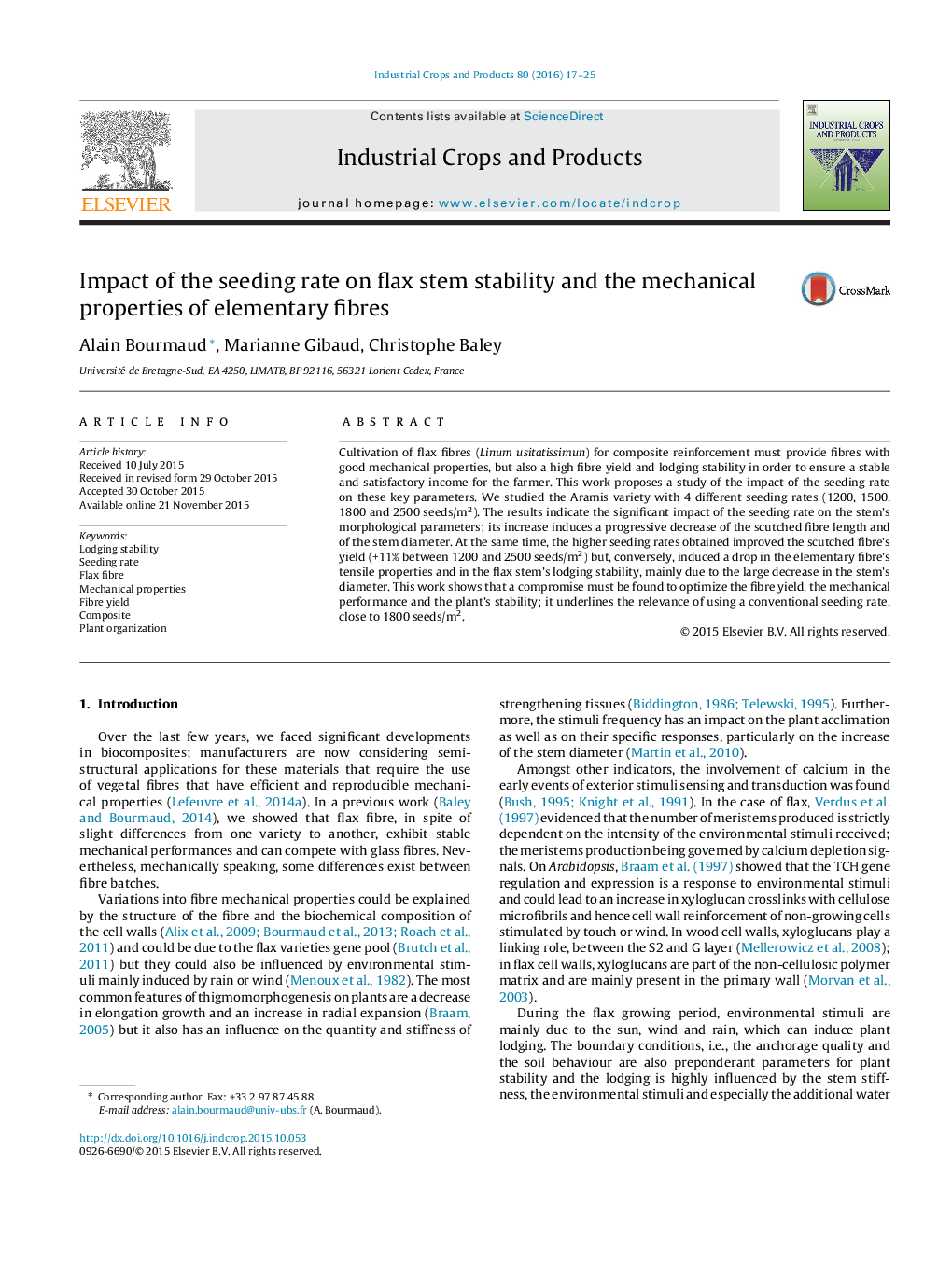| Article ID | Journal | Published Year | Pages | File Type |
|---|---|---|---|---|
| 4512580 | Industrial Crops and Products | 2016 | 9 Pages |
•This work is an innovative study on the impact of flax seeding rate on plant stability.•A drastic evolution of fibre length and stem diameter was highlighted.•High seeding rate induces a drop on fibre mechanical performances.•The plant lodging stability is affected for high level of plant density.
Cultivation of flax fibres (Linum usitatissimun) for composite reinforcement must provide fibres with good mechanical properties, but also a high fibre yield and lodging stability in order to ensure a stable and satisfactory income for the farmer. This work proposes a study of the impact of the seeding rate on these key parameters. We studied the Aramis variety with 4 different seeding rates (1200, 1500, 1800 and 2500 seeds/m2). The results indicate the significant impact of the seeding rate on the stem’s morphological parameters; its increase induces a progressive decrease of the scutched fibre length and of the stem diameter. At the same time, the higher seeding rates obtained improved the scutched fibre’s yield (+11% between 1200 and 2500 seeds/m2) but, conversely, induced a drop in the elementary fibre’s tensile properties and in the flax stem’s lodging stability, mainly due to the large decrease in the stem’s diameter. This work shows that a compromise must be found to optimize the fibre yield, the mechanical performance and the plant’s stability; it underlines the relevance of using a conventional seeding rate, close to 1800 seeds/m2.
